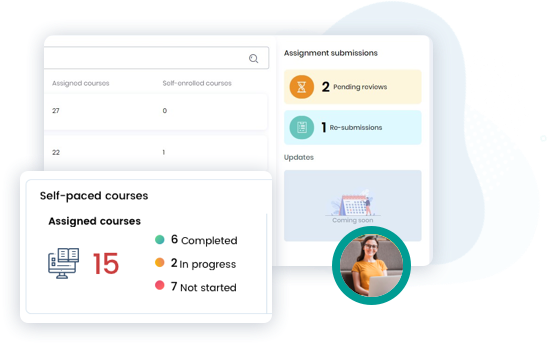


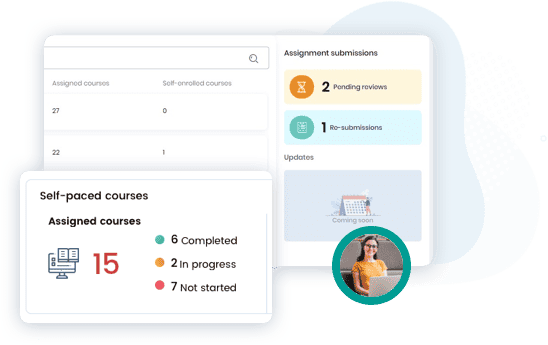

Corporate Learning and Development Platform Tailored To Your Workplace![]()
Personalizing eLearning development and delivery to match your organizational training goals
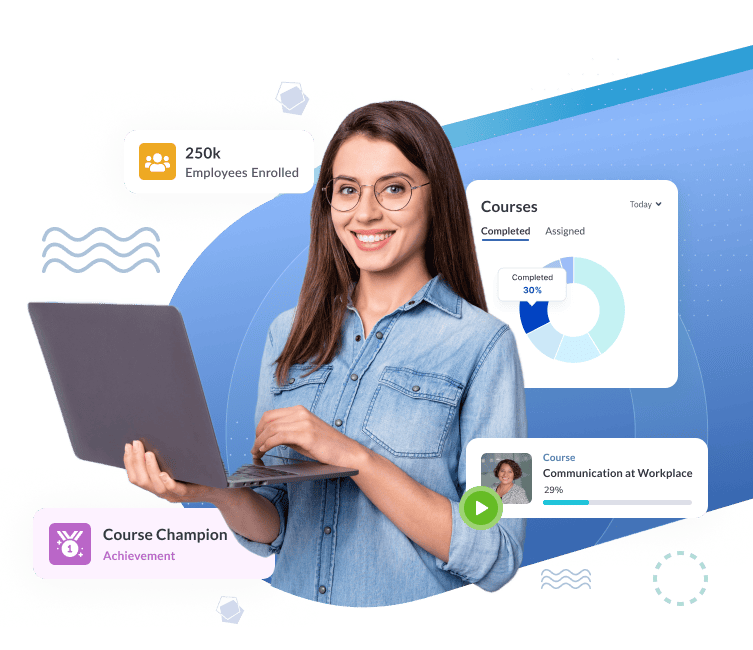
Captivate Learners’ Interests Through Deep Engagement
If the learning materials are irrelevant, poorly designed, and not engaging, learners may lose interest quickly. A one-size-fits-all approach would not suit the preferences of each learner, and a lack of incentives leads to learners not fully engaging with the learning process.

Directed Learning
With direct guidance from instructors and mentors, learning becomes structured and goal-oriented, which ensures that learners achieve their specific learning objectives faster.

Interactive Content
Learning content featuring interactive and immersive elements like AR/VR simulations and videos makes learning more enjoyable and smooth, helping learners rapidly absorb and apply acquired skills.

Personalization
Mentors and instructors can customize and fine-tune their learning and development strategies to closely match the unique preferences and needs of each learner, which enhances engagement and comprehension.

Course Creation
Learning and Development (L&D) teams can create engaging, captivating, and suitable course content in different formats and conveniently host them all on Skill Lake.
Make Learning More Focused and Purpose-Driven
When learners don’t understand the “why” behind learning, they’ll struggle to find meaning in the process. This negatively impacts organizations, as learners who don’t see the purpose may disengage and lag in skill development.

Continuous Feedback
Mentors can share regular feedback and deliver targeted training programs to learners, emphasizing the value of learning.

Incentivize Learning
Instill much-needed motivation and encouragement in learners by noticeably recognizing their achievements through virtual rewards, such as badges and course completion certificates.

Defined Learning Objectives
By hosting learning content that aligns with well-defined learning objectives, learners get a clear roadmap of their learning journey and how it aligns with their specific roles and organizational goals.

Mentor/Instructor Support
When necessary, mentors or instructors can step in by conducting live, in-person sessions to clarify the learning objectives and address any questions or concerns.
Bridge Skill Gaps to Adapt and Stay Competitive
Many organizations still underestimate the extent of the skill gap, which is often broader than they realize. Tackling this is a formidable challenge that demands a full-scale assessment at all levels.

Knowledge Areas
A complete array of knowledge areas accurately portrays learners’ proficiency levels and can be upgraded as they advance in their learning journey and attain the necessary skill sets.

Assess Competence
Grade levels make it easy to correctly identify each learner’s current knowledge level, thus giving a detailed picture of their existing skills and the capabilities they need to acquire.

Custom Learning Paths
By considering each learner's specific skills, knowledge, and preferences, mentors or instructors can lay down a custom learning approach with the right mix of courses and activities to be completed within a specified time frame.

Align with Company Objectives
Strategically align learning and development with the organization’s goals and priorities. This is possible by assessing learners’ needs and supplementing those needs with the skills that the organization requires.
Enhance Learning Retention Through Precise Engagement
Low learning retention can negatively affect organizations. There’s decreased employee productivity as they struggle to apply acquired knowledge, which reduces the effectiveness of learning and development programs, despite the time and effort invested in them.

Spaced Repetition
Encourage learners to revisit learning resources over time through scheduled notifications or emails to reinforce what they have learned, improve retention, and deepen engagement.

Engaging Content
Urge learners to revise and reinforce their learning by creating and delivering interactive, multimedia-rich learning materials that improve engagement and make for easy consumption.

Regular Assessments
Mentors can assist learners in strengthening their knowledge and recall via regular assessments and quizzes, which highlight areas where learners may need improvement.

Microlearning
Deliver bite-sized learning content to prevent information overload and enable quick consumption. This way, learners can focus on one specific topic, reinforcing their understanding.
Reinstate Accountability to the Learning Process
When learners lack accountability, it can have adverse effects, leading to disengagement, hampered professional growth, missed opportunities, and noticeable skill gaps, eventually leaving them underqualified and potentially impacting their careers.

Learning Objectives
Clear and well-defined learning objectives serve as a roadmap for learners, outlining what they are expected to achieve. Managers can promote these to guide learners through each step of their learning journey.
Progress Tracking
By performing competence and knowledge assessments in Skill Lake, mentors can carefully track learner progress, identify skill gaps, and suggest improvements, enabling learners to take ownership of their learning.

Regular Feedback
With firm support and prompt feedback, managers can inspire learners to pursue their goals relentlessly, bringing accountability for their learning achievements.

Gamify Elements
The platform's gamification features make learning an enjoyable and engaging experience, offering rewards in the form of badges and certificates, thus effectively motivating learners.
Explore the complete learning and development platform
























Corporate learning and development platform to meet your unique training needs
- Scalable to any number of users
- Personalized learning paths
- Options to custom-brand your learning software
- Training for external users - customers, partners, employees
- Dynamic and engaging learning feeds for each learner
Building better learning experiences with Skill Lake
Catering to the learning needs of a multigenerational workforce
A global IT company on the cusp of transitioning into a large organization deployed Skill Lake to build a successful learning culture, make employee onboarding more convenient, and effectively administer courses catering to the learning needs of a multigenerational workforce spread across geographies.
This considerably streamlined training, reduced manual efforts, saved time, and elevated learner engagement, which earned them the “Great Place to Work” Award.
- 67% reduction in training costs
High savings on people development, onboarding, and employee training initiatives - 5X increase in learner engagement
Achieved enhanced engagement through personalized learning paths, multiple course delivery modes, and the integration of gamified elements.

eLearning LMS capabilities for an asset management company
Five Brothers, a leading asset management solutions provider, uses our learning management software to provide up-to-date and consistent on-the-job training to their employees, so they can interact and engage with their clients more effectively.
- All prescribed courses made accessible on mobile
- Easy-to-use course library with on-demand access to training content
- Boosted employee morale with interactive and engaging learning experience
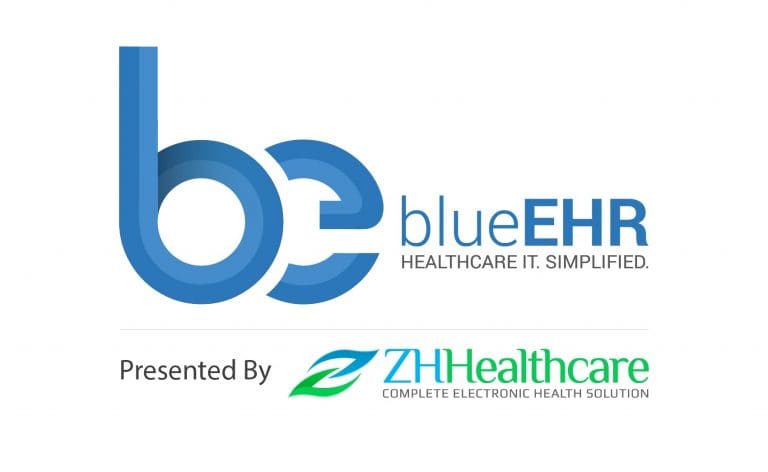
Simplifying compliance training for a digital healthcare platform
ZH Healthcare, a pioneer of digital healthcare, switched to Skill Lake LMS to simplify compliance training and the maintenance of Standard Operating Procedures (SOPs).
The platform facilitated the seamless enrollment and training of employees while also streamlining the onboarding process for new hires.
- Achieved a 72% reduction in cost for compliance
- Improved learner engagement by facilitating the creation of content in varied, engaging formats through our inbuilt content authoring tool
- Helped set learning objectives and track the progress of all enrolled learners
Effective training management for a leading retail company
A global retail company with operations spread worldwide switched to Skill Lake’s comprehensive web and mobile learning platform to host and deliver training from anywhere.
As a result, their staff at geographically dispersed centers were able to access training materials conveniently on their mobile, broadening training coverage and saving costs.
- Increased training coverage by 99%, up from the previous 29%
- Achieved $93,000 savings in overall training costs
- Transformed regular PDF manuals into engaging, high-quality learning resources
eLearning LMS solutions for a religious non-profit organization
TROTB, an international Christian non-profit organization, quickly switched to online training with Skill Lake LMS software and earned more savings on training costs, reduced volunteer churn, and improved training efficiency.
With Skill Lake LMS, the customer achieved:
- 60% reduction in the total operating costs
Tremendous savings on venue, travel, accommodation, and more - 30% improvement in training efficiency
Personalized mentoring and learning makes training more coherent
Manage content creation and publishing with ease
-
Powerful content authoring tools to manage the entire eLearning content development lifecycle
Vast course library to store and retrieve self-paced and instructor-led courses. Reusable templates for multiple batches of learners.
Create, host, and deliver SCORM compliant eLearning course packages
Incorporate multiple content formats within a course - videos, images, documents, text, audio, and more
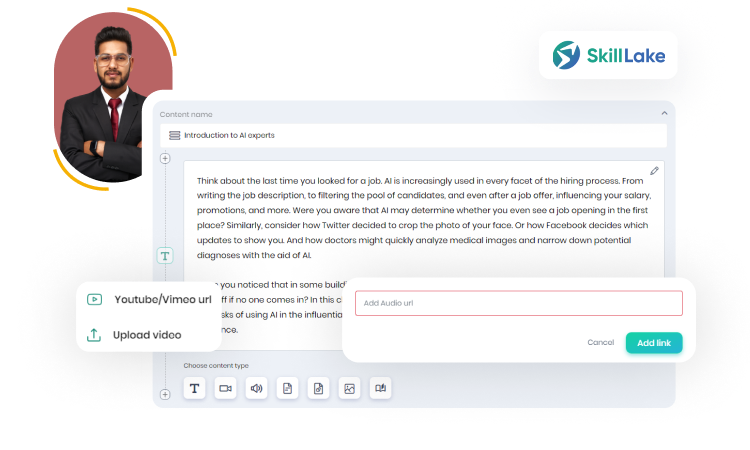
Mobile app for learners to enhance learning mobility
-
Secure and user-friendly learning mobile apps for Android and iOS device users
Dynamic and modern learning feeds with content tailored to the learner’s interests
Plain and fluid navigation allows learners to discover courses and self-enroll on the fly

Skills development and competency management
-
Identify skills deficiency and close the gaps through mentoring and course recommendations
Organize graded and guided assessments at multiple levels (individual, team, organization, or intermediate) to evaluate skills and competencies
Advanced reporting to keep an eye on learner progress and performance
Chart and track learning journeys that showcase achievements, course completions, updated knowledge areas, feedback, reviews, and more.
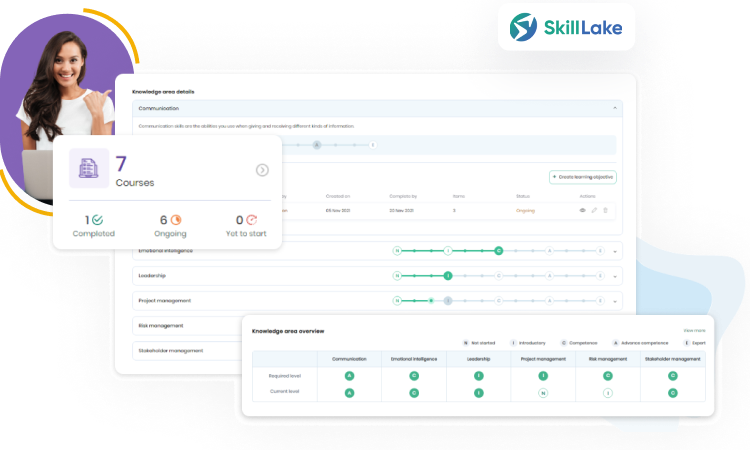
Learning and development platform designed to address evolving workplace needs
-
Make your courses more engaging by integrating Augmented Reality (AR) and Virtual Reality (VR)-powered training content
AI-enabled personalized course recommendations based on the learner’s current skills, areas of interest, and they department they belong to
Virtual gamification to motivate learners such as awarding badges to learners based on completed courses, number of learning hours, and individual learning scores
Deliver micro-learning through our corporate learning and development platform by sharing bite-sized content for faster consumption
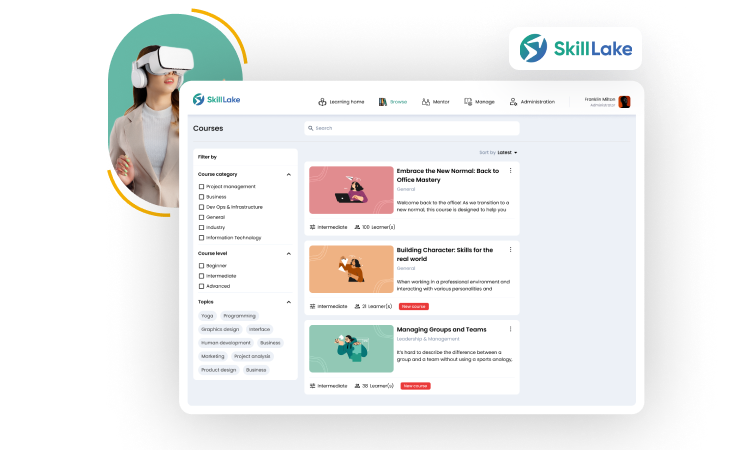
Learning and development platform designed for the new-age workforce
Rise Above Content Consumption
- Build the skills and competencies your people actually need
- Attain performance excellence by converting learning into action
- Sustain productivity and performance with individual mentoring
Boost Learning Accountability
- Employees can set realistic goals, track their progress, and be more accountable for their own skill development and growth
- Mentors can identify skill shortages of employees, design learning paths, track progress and share regular feedback
- Manage organization-wide competency development plans and timelines
Fuel business growth and success
- Navigate business challenges at scale as you grow
- Enhance organizational productivity and adapt quickly to changes
- Build ROI and profitability through a competent workforce
Sort and arrange learning materials
- Create a searchable course library to bring all scattered content together in one place
- Organize and standardize all eLearning content based on your preferences
- Create and manage playbooks, SOPs and process documentations
Social and collaborative learning
- Breed a culture of knowledge sharing and learning across the organization
- Motivate learners to share their achievements and milestones crossed
- Inspire employees to learn continuously and keep up with their peers
Customize learning for each employee
- Align learning with both individual aspirations and organizational needs
- Personalize course recommendations and tailor learning paths for each learner
- Suggest result-oriented learning plans and next steps with effective coaching and mentoring

Are you trying to solve a corporate learning and development challenge that hinders your growth?
Frequently asked question
A learning and development platform is a software solution that allows you to create, implement, streamline, and manage eLearning development programs from a single interface. L&D systems help execute the back-end operations of learning management such as administration, course scheduling, progress tracking, assessment, reporting, etc. The software gives a complete overview of the entire learning initiatives of your organization without juggling different tools and systems.
Using a corporate learning and development platform like Skill Lake, it’s easy to align your employee training with larger organizational goals and bolster employee engagement. It saves your training costs and time by automating the mundane tasks in organizational training.
Skill Lake supports different approaches to blended learning such as self-paced learning, Instructor Led Training (ILT), webinars, virtual classroom sessions, gamification, and microlearning. Learn more here.
Yes. Skill Lake offers content modernization service to update your legacy training content. We help redesign and present your e-learning courses in the most engaging and impactful format that appeals to your learners. For example, we can help you integrate AR or VR-powered training content into your courses to provide your employees an immersive learning experience. We also help transform your e-learning courses into videos, slides, PDFs, motion graphics, or any other format that you like.
Yes. Skill Lake offers pre-built SSO connectors that allow easy-implementing of integrations with your organization’s identity provider.
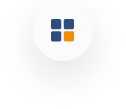 Powerful content authoring tools to manage the entire eLearning content development lifecycle
Powerful content authoring tools to manage the entire eLearning content development lifecycle